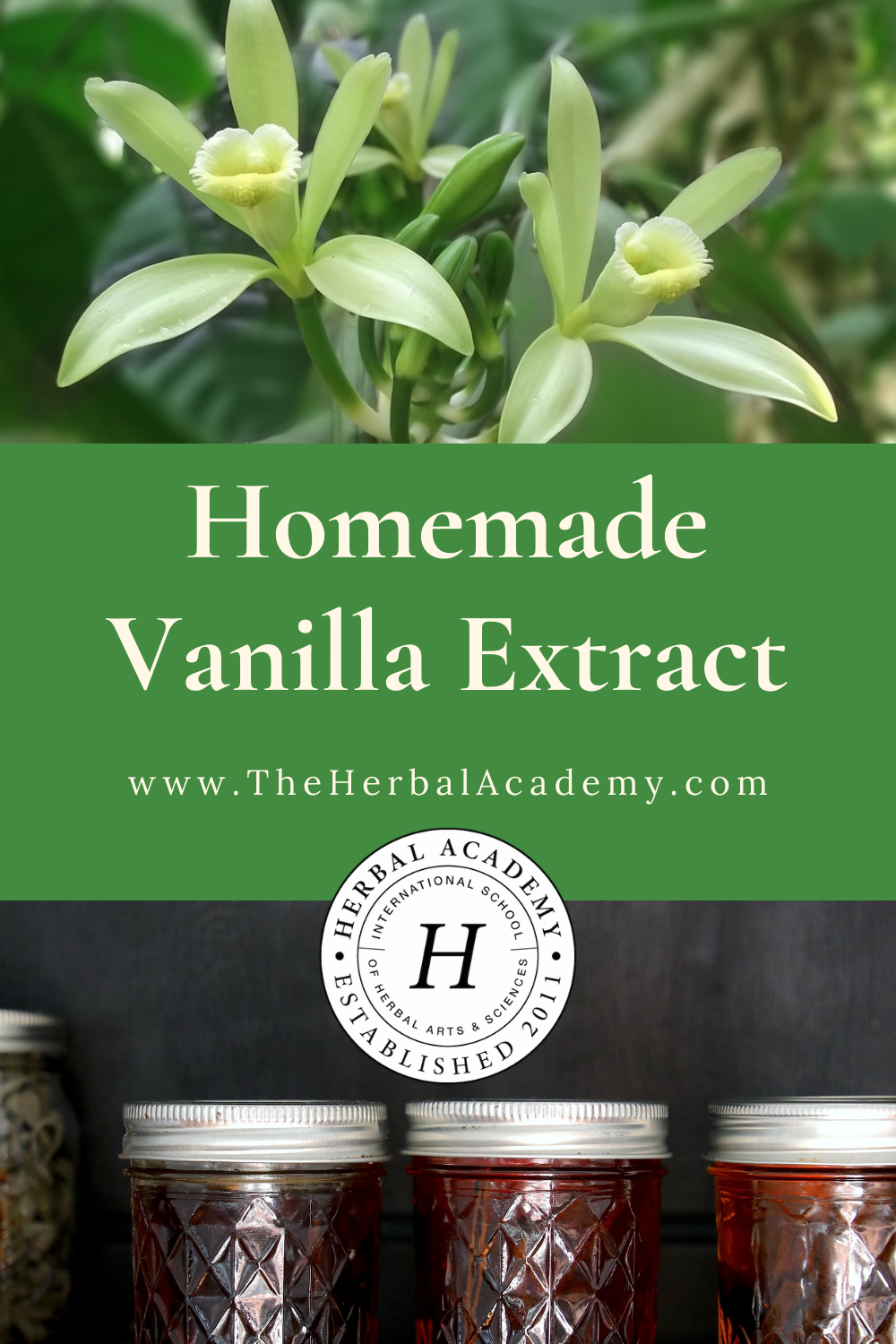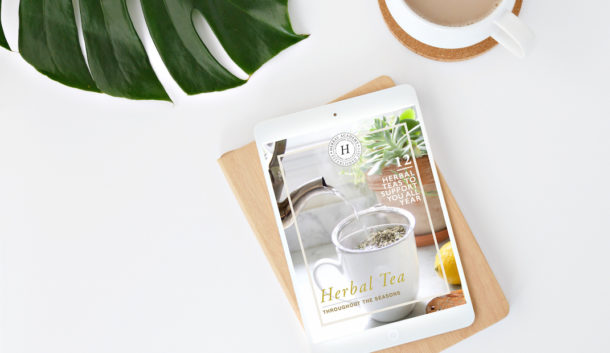Homemade vanilla extract is worlds apart from the generic imitation vanilla typically found at big box stores (Thomson, 2017). Mmm…vanilla. Its sweet, perfumed aroma and flavor are known and loved around the world. No wonder it has been celebrated and used for hundreds of years, first cultivated by the Totonac Indians in eastern Mexico. While vanilla gained a foothold as a flavoring for cacao drinks, it quickly became evident that it was a flavor powerhouse unto itself, and has been used ever since to add its decadent flavor to cakes, confections, syrups, puddings, ice cream, and even perfumes.
The vanilla bean is the fruit of Vanilla planifolia, an evergreen vining orchid native to Mexico and grown in the tropical regions of countries such as Madagascar, Indonesia, Mexico, Papua New Guinea, Tahiti, India, and Uganda. Vanilla has aerial roots that cling to trees, thick, fleshy leaves, and lovely white, cream, or yellow trumpet-shaped blossoms that bloom only for one day (Menon & Nayeem, 2013).
In its native Mexico, vanilla was pollinated by an indigenous bee, but when vanilla began to be grown in other regions of the world without its natural pollinator, hand pollination became necessary to produce the bean. This, along with the lengthy curing process necessary to produce the oily, pliable, dark brown to black bean, explains why vanilla beans are so very expensive (Fortini, 2005). But worth it.
Homemade Vanilla Extract
Homemade vanilla extract adds its perfumed, complex flavor to hot and cold drinks, baked goods, confections, smoothies, yogurt, and more. It is also a lovely (and easy) gift to make for the chefs or foodies in your life. They will appreciate its high quality and excellent flavor. Yield: 8 ounces.
Ingredients
5 vanilla (Vanilla planifolia) beans
1 cup vodka, brandy, bourbon, or rum (80 proof, or 40% alcohol)
8-ounce glass bottle or jar
Directions
- Split vanilla beans lengthwise using a knife. Chop crosswise into smaller pieces if needed to fit them into the bottle.
- Place prepared beans into the bottle.
- Pour the alcohol into the bottle and cap.
- Let steep in a cool, dark place for 4-6 weeks, shaking every few days.
- If giving as a gift, strain extract and pour into a clean bottle or jar with a fresh vanilla bean. If using at home, you can leave the vanilla beans in the bottle and add more alcohol when the extract gets low, letting steep again to make more extract. In this case, have two bottles of vanilla steeping so that when one gets low, you can alternate use to the other.
In Closing,
Vanilla has an abundance of uses in cooking, perfumes, and bath botanicals. Here are some vanilla-related recipes to get you started.
Make Your Night Memorable With A Rose-Vanilla Massage Oil
Damiana and Vanilla Cordial
Vanilla Recipes: 3 Ways to Bliss

REFERENCES
Fortini, A. (2005). The white stuff [Online article]. Retrieved from https://ift.tt/1hmQYoX
Menon, S. & Nayeem, N. (2013). Vanilla planifolia: A review of a plant commonly used as flavouring agent [Online journal article]. International Journal of Pharmaceutical Sciences Review and Research (20)2, 225-228.
Thomson, Julie, R. (2017). So that’s what imitation vanilla extract is made of [Online blog post]. Retrieved from https://ift.tt/3tNOCcL
Source link
[ad_2]
source https://earn8online.com/index.php/235410/homemade-vanilla-extract-herbal-academy/

No comments:
Post a Comment